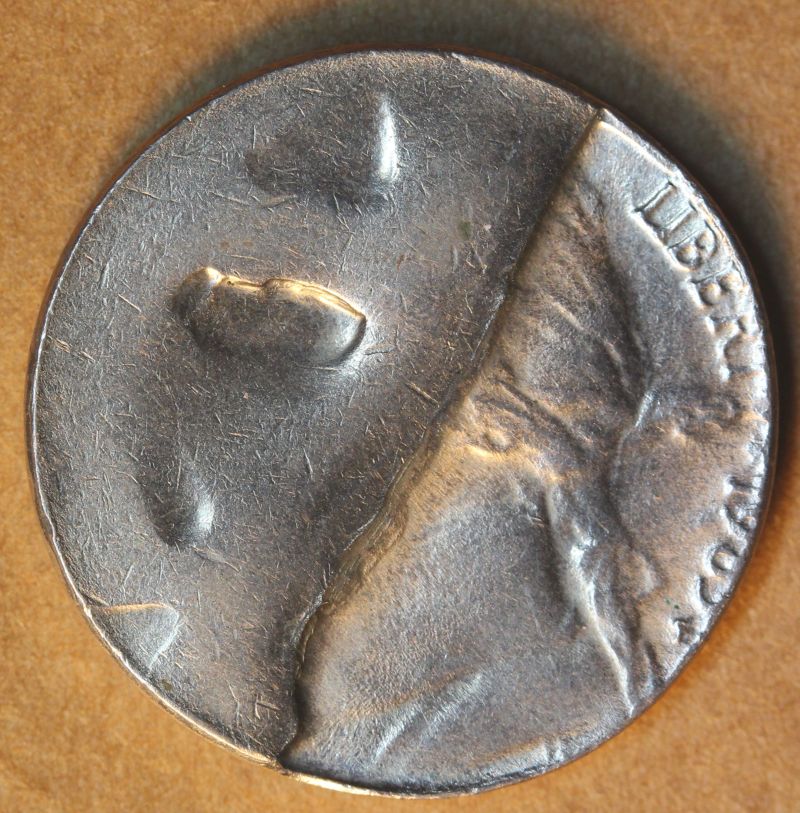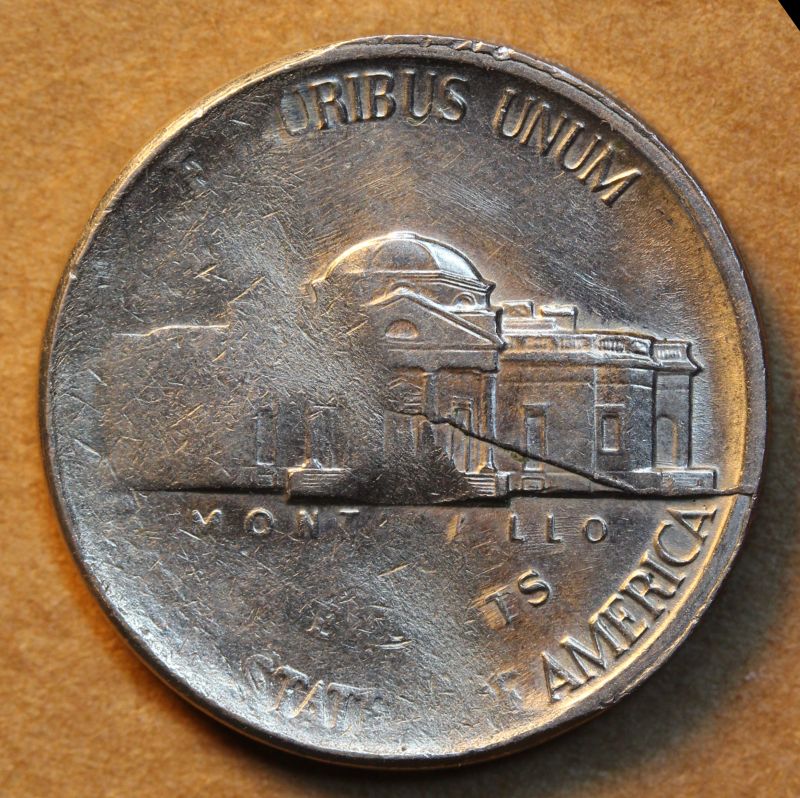Part IV. Die Errors:
Die exfoliation errors
Definition: A thin layer of steel spalls off the die face, rendering the design slightly indistinct and leaving the surface with a grainy microscopic surface texture.


The single purported example of a die exfoliation error appears on a 1983-P nickel struck by a slightly misaligned obverse die and a cracked reverse die. The left side of the obverse face features an unusual 50% cud with an indented surface. The right side of the obverse face displays a uniformly grainy surface texture and an indistinct design. This texture is not one found in association with capped die strikes or any known struck-through error. Also unlike a capped die strike, the design shows no ripples surrounding the design or tendrils extending from the design. The indentations within the cud show a smooth texture, indicating that whatever caused the grainy texture was confined to the area to the right of the cud.
The relief of the design is unexpectedly low, relative to the amount of detail present. Also, many of the letters and numbers are oddly attenuated. These features are also inconsistent with any known struck-through error.
Since alternative hypotheses are deficient in explaining this error, it would appear that a very thin layer of die steel separated from the die face.